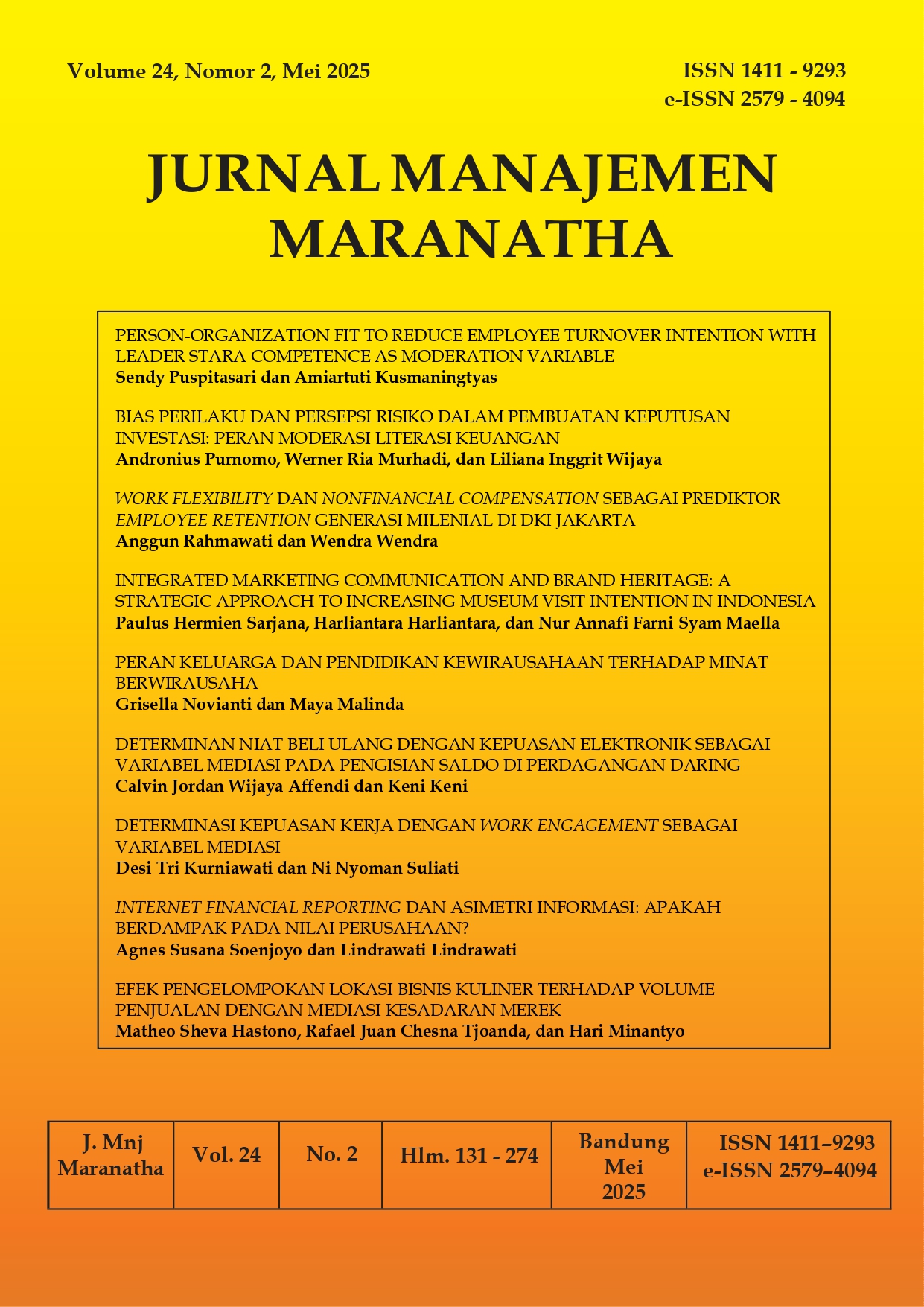Efek pengelompokan lokasi bisnis kuliner terhadap volume penjualan dengan mediasi kesadaran merek
Isi Artikel Utama
Abstrak
Unduhan
Rincian Artikel

Artikel ini berlisensi Creative Commons Attribution-NonCommercial 4.0 International License.
Referensi
Anggriani, Y., & Ismunandar, I. (2022). Pengaruh brand awareness dan perceived quality terhadap repurchase intention pada produk Ms Glow di Kota Bima. JUEB: Jurnal Ekonomi dan Bisnis, 1(2), 71-81. https://doi.org/10.55784/jueb.v1i2.120
Ansari, O. B. (2023). Geomarketing intelligence in the era of artificial intelligence and computer science [Triagon Academy]. https://doi.org/10.13140/RG.2.2.21619.30248
Azzari, V., & Pelissari, A. (2020). Does brand awareness influences purchase intention? The mediation role of brand equity dimensions. Brazilian Business Review, 17(6), 669-685. https://doi.org/10.15728/BBR.2020.17.6.4
Brown, K. A., Burgess, J., Festing, M., & Royer, S. (2013). Resources and competitive advantage in clusters (K. A. Brown, J. Burgess, M. Festing, & S. Royer, Eds.). Rainer Hampp Verlag. https://www.researchgate.net/publication/272018979
Butt, M. N. (2023). Mitigating the negative effect of intrabrand clustering: The role of interbrand clustering and firm size. Journal of Brand Management, 30(1), 34-48. https://doi.org/10.1057/S41262-022-00290-W

